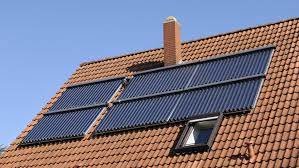Solar Light Tubes: Pros, Cons, And Everything You Need To Know
What is a solar light tube?
A solar light tube, also called a solar tunnel or daylight pipe, is a type of light fixture that uses reflectors to direct sunlight into a home or other building. It captures sunlight and directs it into a building through a clear, insulated pipe. Solar light tubes are an efficient and cost-effective way to bring natural light into dark rooms or spaces that do not have windows. With that, one can reduce the use of artificial lighting, resulting in saving energy and lowering electric bills.
Both of them are suitable for usage in residential and business structures. Solar light tubes are easy to install and require little maintenance, making them an ideal option for homeowners and business owners who want to reduce their energy costs.
This article will cover all the useful information about solar light tubes like their different types, construction, working, and their application in different industries.
Working of Solar Light Tubes explained
The working principle of the solar tube is based on the photoelectric effect of semiconductor materials. Unlike traditional solar panels, which are typically installed on rooftops, solar light tubes can be installed on any south-facing surface. When sunlight hits the mirror, it is reflected down the tube and into the room below.
Solar light tubes feature a doomed structure on their roof to capture sunlight. The sunlight is then directed down the tube by the reflective coating. The sunlight is diffused by a lens at the end of the tube, which spreads the light into the room. Solar light tubes can provide up to four times as much light as a skylight of the same size and can be an efficient way to reduce energy costs.
Types of Solar Light Tubes
Based on the construction and shape of the tube, solar lights can be divided into three different major types.
- Simple solar tubes,
- Adjustable solar tubes,
- Photovoltaic Integrated Solar Tubes (PVISTs)
Simple solar tubes
Simple solar tubes are the most common type of solar light tube. They have a transparent tube installed on the roof of a building. The tube captures sunlight and directs it into the interior of the building. These types of solar tubes can be used to generate electricity or heat the water.
The two main types of solar tubes are Rigid and flexible tubes. Rigid solar tubes are made of glass or metal and can be used for short distances. Flexible solar tubes are made of plastic and can be used for longer distances.
Adjustable solar tubes
Adjustable solar tubes are an ideal choice for rooms that receive direct sunlight for only part of the day, as they can be positioned to capture the maximum amount of light. In addition, adjustable solar tubes are often easier to install than rigid solar tubes, making them a popular choice for do-it-yourselfers.
The adjustable solar tube can be adjusted to get more sunlight by rotating it. Adjustable solar tubes help in generating electricity for smaller domestic purposes like lighting and giving power to electronic devices. It can also be used in industries for various purposes like the production of heat, running of motors, etc since Solar energy is a renewable source of energy and it does not cause any pollution.
So, installing adjustable solar tubes is a very good way to save energy and money.
Photovoltaic Integrated solar tubes
PVISTs are the most expensive type of solar light tube, but they are also the most efficient. PVISTs capture sunlight and convert it into electricity, to supply power to lights or other electrical devices. PVISTs are intended to be used in commercial or industrial applications, but they are also increasingly installed in residential settings. The most recent solar technology on the market is solar tubes. They are a hybrid of traditional PV panels and solar thermal collectors. Pv-integrated solar tubes have a fan built into them, which helps to circulate air and keep the temperature inside the tube constant. This makes them more efficient than traditional PV panels, which can lose heat quickly. Pv-integrated solar tubes are also less expensive than traditional solar thermal collectors. There are a few different manufacturers of Pv-integrated solar tubes.
PV-integrated solar tubes are the newest type of hybrid solar tube. They are a combination of a Solar PV module PV panel and a Solar Thermal Collector. The Pv panel is integrated into the collector so that it does not protrude from the surface of the tube. The benefits of this type of solar tube are that it is more efficient than a traditional solar thermal collector, and you can also generate electricity from them. There are two types of PV-integrated solar tubes: those with a fan, and those without a fan. The PV-integrated tube with a fan is more efficient than the PV-integrated tube without a fan, but both types are more efficient than traditional solar thermal collectors. Some examples of PV-integrated solar tubes are the Evacuated Tube Solar Collector and the Flat Plate Solar Collector.
The Pros of Solar Light Tubes
- Solar light tubes are a great way to bring natural light into your home without having to worry about the high costs and maintenance associated with traditional skylights.
- One of the key benefits of solar tube lighting is that it can help to reduce your energy consumption and costs.
- Solar light tubes are easy to install and are much more energy-efficient than skylights, making them a great option for those looking to save money on their energy bills.
- Additionally, solar light tubes require little maintenance, making them a good option for busy homeowners.
- Solar light tubes are an increasingly popular choice for homeowners looking for an energy-efficient lighting solution. Solar light tubes have a number of advantages over traditional skylights, including cost savings, easy installation, and energy efficiency.
- Other than that, after installation, solar light tubes require only a small amount of maintenance once they are installed. As a result, they are an excellent choice for anyone looking for an eco-friendly and low-maintenance lighting solution.
The Cons of Solar Light tubes
While there are many potential benefits to installing solar light tubes in your home, there are also some potential drawbacks to consider.
The less control you have over the light intensity entering your home is another drawback of solar lighting. Solar light tubes rely on the position of the sun to provide natural lighting, which means that you may not be able to get the same level of illumination on cloudy days or during the winter months.
Additionally, because solar light tubes are installed in your ceiling, they can have a limited impact on the overall design of your space. If you’re looking for a way to add more natural light to your home while also making a design statement, then solar light tubes may not be the best option.
Finally, while solar light tubes can help to heat your home during the day, they will not provide any passive solar heat at night. This means that you may still need to use artificial lighting or heating sources to keep your home comfortable after the sun goes down. However, keep in mind the potential drawbacks of solar light tubes in your home before making the decision to install them.
One of the main disadvantages is that you have less control over the light than with traditional light fixtures. Solar light tubes rely on natural sunlight, so they will not produce light if the sun is not shining. In addition, solar light tubes can have a limited impact on your home’s design. While they can be a great way to add extra light to a room, they are not as versatile as other light fixtures when it comes to placement and style options. Lastly, solar light tubes will not provide as much passive solar heat as traditional windows.
If you are looking for a way to reduce your energy bills and your carbon footprint, solar light tubes may be a good option. However, before making a choice, make sure to carefully weigh all the advantages and disadvantages.
Application of Solar Tubes in different fields
Solar tubes are a simple and efficient way to collect solar energy and can be used in a variety of applications. They are often used in conjunction with skylights, and they can be an effective way to improve the lighting in a space. Solar tubes are becoming increasingly popular in a variety of applications, including schools, office buildings, and retail stores.
Solar tubes can be particularly useful in spaces that are not conducive to skylights, such as classrooms and offices. Solar tubes can also be used in combination with Passive House design principles to further improve the energy efficiency of a space. In some cases, solar tubes can even be used to heat water. The potential applications of solar tube technology are vast, and they are sure to become more commonplace in the years to come.
Final Words
Solar light tubes are a cost-effective solution to add natural light to your house and can reduce your energy costs. We hope that this article has given you valuable information about solar light tubes and their many benefits.
Frequently Asked Questions (FAQs)
- How can you install a solar tube?
You have to make a cut in just one ceiling hole to install a solar tube below the roof which is less complicated than installing the skylight.
- What are the different types of solar tubes?
Based on their structural design, solar lights can be categorized as:
- Simple solar tubes,
- Adjustable solar tubes,
- Photovoltaic Integrated Solar Tubes (PVISTs)







